Undead and abject, the zombie is uncontrollable ambiguity.1 Slouching across the earth, restlessly but with hallucinatory slowness, it is a thing with a soul, a body that is rotten but reactive, oblivious to itself yet driven by unforgiving instinct.
It follows that if the zombie is defined by ambiguity, it cannot be reduced to a negative presence. In fact, it could be a friend. So why does it lend itself so easily as a metaphor for alienation, rolling readily off our tongues? Resorting to the zombie as a sign for mindless persistence is unfair to this particular monster, to be sure, but also apathetic and facile in the perspective of the historical space we inhabit.
My proposal, perverse or braindead as it may be, is that the zombie begs a materialist analysis with a view to contemporary culture. Such an analysis is necessarily double-edged. The zombie is pure need without morality, hence it promises a measure of objectivity; we know exactly what it wants—brains, flesh—because this is what it always wants. Abject monstrosity is naturally impossible to render transparent, but abjectness itself harbors a defined function that promises instrumentality (of a blunt and limited kind, admittedly). In this way we may proceed to address contemporary relations of cultural production, at the same time as we reflect on the analytical tools we have for doing so.
Thus the following is an attempt at a sociological reading of the zombie that draws its necessity from the pressure that the capitalization of creativity has exerted on artistic practice and spectatorship in the recent decade. But it is also the inevitable subversion of the conclusions of such an analysis, as we begin to return to artistic thinking.
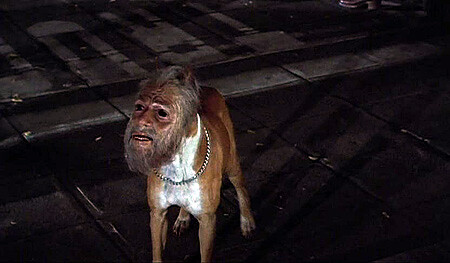

1. Marxploitation of the Gothic
The zombie as a figure of alienation is the entranced consumer suggested by Marxian theory. It is Guy Debord’s description of Brigitte Bardot as a rotten corpse and Frederic Jameson’s “death of affect”; and of course what media utopianist Marshall McLuhan called “the zombie stance of the technological idiot.”2 Thus zombification is easily applied to the notion that capital eats up the body and mind of the worker, and that the living are exploited through dead labor.
When Adam Smith invoked the moral operations of the “invisible hand of the market”, he had something else in mind than an integrated world economy that recalls Freud’s unheimlich: “Severed limbs, a severed head, a hand detached from the arm, feet that dance by themselves—all of those have something highly uncanny about them, especially when they are credited with independent activity.”3 Under the globalized reinforcement of capital, the independent activity of ghost limbs is increasingly only apparent, yet no less gratuitous and unsettling.
Economy and production have in this way often been dressed up in Gothic styles; just think of William Blake’s “dark satanic mills” of industrialization. It is doubtful, of course, that Marx would have endorsed the zombie as a figure of alienation, inasmuch as it incarnates a collapsed dialectics (between life and death, productivity and apathy, etc.) that can only be recaptured with great difficulty. However, leafing through The Communist Manifesto of 1848 one finds rousing Gothic metaphor. The power of class struggle is famously likened to a ghost that is haunting Europe—the “specter of Communism”; we are also told that with the proletariat, the bourgeoisie has produced “its own gravediggers,” and that modern bourgeois society “has conjured up such gigantic means of production and of exchange” that it is like “the sorcerer, who is no longer able to control the powers of the netherworld whom he has called up by his spells.”4 The Gothic, understood as the revival of medieval styles in the seventeenth century and since, is the theatrical representation of negative affect that emanates from a drama staged around power; a pessimistic dialectic of enlightenment that shows how rationality flips into barbarism and human bondage. Thus it is puzzling (or populist, agitational) that Marx and Engels employ Gothic metaphor related to the middle ages “that reactionists so much admire.”5 The Gothic contraband in progressive politics is the notion that fear can be sublime. It is as if the reader of the manifesto cannot after all rely on the “sober senses,” but needs a little extra rhetorical something to compel her to face her “real conditions in life.”6 How did the excess of counter-enlightenment tropes come to prominence in processes of political subjectivation? As Derrida writes in Specters of Marx, “Marx does not like ghosts any more than his adversaries do. He does not want to believe in them. But he thinks of nothing else… . He believes he can oppose them, like life to death, like vain appearances of the simulacrum to real presence.”7 Once it becomes clear that Marxist ghost-hunting is already corrupted by a Gothic impulse, it allows for a reconstruction of Marxist critique; a new “spirit of Marx,” as discussed by Derrida. In terms of traditional aesthetic hierarchies, the Gothic definitely belongs amongst the underdogs of genres, to the embarrassing aesthetic proletariat. Maybe this is what spoke through Marx, like spirits inhabiting a medium, and helped shaped his formidable literary intuition?
In this perspective there is no political reason to exclude the Gothic. The New York artists collective Group Material were among the first to establish a link between the Gothic and a Marxist line of cultural critique, before the former became a curatorial trope.8 The flyer for their 1980 show “Alienation” mimicked advertising for Alien, and the film program included James Whale’s Frankenstein (1931). In their installation Democracy (1988), a zombie film was continuously screened throughout the exhibition: Dawn of the Dead, “George Romero’s 1978 paean to the suburban shopping mall and its implicit effects on people.” The film was “an especially significant presence … , one which indicated the pertinence of consumer culture to democracy and to electoral politics.”9
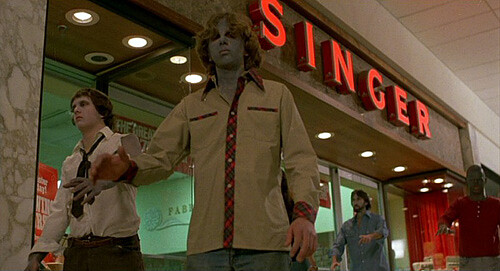

Franco Moretti makes it clear that you can’t sympathize with those who hunt the monsters. In his brilliant 1978 essay “Dialectic of Fear” he notes that in classic shockers such as Bram Stoker’s Dracula and Mary Shelley’s Frankenstein ”we accept the vices of the monster’s destroyers without a murmur.”10 The antagonist of the monster is a representative of all that is “complacent, stupid, philistine, and impotent” about existing society. To Moretti this indicates false consciousness in the literature of fear; it makes us side with the bourgeoisie. But by passing judgment on the literature of fear through a dialectic of reason and affect (Stoker “doesn’t need a thinking reader, but a frightened one”), Moretti’s ideology critique joins the ranks of the destroyers of the monster and thereby, on a cultural level, of those fictitious characters he criticizes. In fact, Moretti kills the monster twice: he doesn’t question its killing in the text, and he has no need for it outside the text.


George Romero analyzes the conflict between the monster and its adversaries in a similar vein. Crucially, however, his trilogy Night of the Living Dead (1968), Dawn of the Dead (1978), and Day of the Dead (1985), reverses Moretti’s conclusion, thereby turning cultural space inside out. In Romero, antagonism and horror are not pushed out of society (to the monster) but are rather located within society (qua the monster). The issue isn’t the zombies; the real problem lies with the “heroes”—the police, the army, good old boys with their guns and male bonding fantasies. If they win, racism has a future, capitalism has a future, sexism has a future, militarism has a future. Romero also implements this critique structurally. As Steven Shaviro observes, the cultural discomfort is not only located in the films’ graphic cannibalism and zombie genocide: the low-budget aesthetics makes us see “the violent fragmentation of the cinematic process itself.”11 The zombie in such a representation may be uncanny and repulsive, but the imperfect uncleanness of the zombie’s face—the bad make-up, the failure to hide the actor behind the monster’s mask—is what breaks the screen of the spectacle.
Brian Holmes writes in “The Affectivist Manifesto” (2009) that activism today faces “not so much soldiers with guns as cognitive capital: the knowledge society, an excruciatingly complex order. The striking thing … is the zombie-like character of this society, its fallback to automatic pilot, its cybernetic governance.”12 Holmes’s diagnosis gets its punch from the counterintuitive tension between the notion of control and the zombie’s sleepwalking mindlessness. Even our present culture’s schizophrenic scenario of neoliberal economy and post-democratic reinforcement of the state apparatus cannot be reduced to evil. But if Holmes uses the monster trope to define a condition of critical ambiguity, he follows Marxist orthodoxy by setting this definition to work dialectically vis-à-vis an affirmative use of the manifesto format. The manifesto is haunted by its modernist codification as a mobilization of a collective We in a revolutionary Now. This code, and the desire it represents, is invariably transparent to itself, as opposed to the opacity of the zombie.
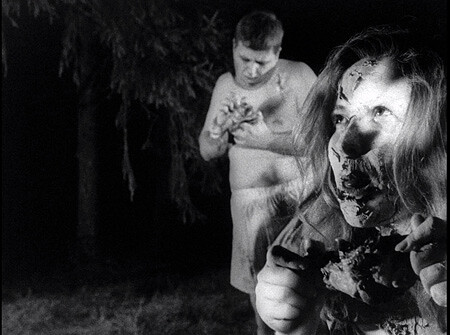

2. Monster of Mass and Multitude
What most informs metaphorical applications of the zombie is perhaps the functional dimension that its abjectness seems to lend to it. According to Julia Kristeva’s definition, the abject is what I must get rid of in order to be an I.13 The abject is a fantasmatic substance that must be expelled—from the body, from society—in order to satisfy a psychic economy, because it is imagined to have such a likeness or proximity to the subject that it produces panic or repulsion. This, Hal Foster writes, echoing critical preoccupations in the art of the 1980s (the abject) and of the 1990s (the “return of the real”), qualifies the abject as “a regulatory operation.”14 The obverse of the abject is a hygienic operation that promises a blunt instrumentality of getting rid of—of expulsing, excluding, severing, repressing. As we have seen, things are not so clear. The abject sneaks back in as a supplement, subverting attempts at establishing hygienic categories.
I will therefore hypothesize that the zombie’s allegorical (rather than merely metaphorical) potential lies in trying to elaborate and exacerbate the zombie as a cliché of alienation by using it to deliberately “dramatize the strangeness of what has become real,” as anthropologists Jean and John L. Comaroff characterize the zombie’s cultural function.15 Why would one want to do such a thing? As Deleuze and Guattari had it, the problem with capitalism is not that it breaks up reality; the problem with capitalism is that it isn’t schizophrenic and proliferating enough.16 In other words, it frees desire from traditional libidinal patterns (of family and religion and so on), but it will always want to recapture these energies through profit. According to this conclusion, one way to circumnavigate capitalism would be to encourage its semiotic excess and its speculation in affect. Capitalism is not a totalitarian or tyrannical form of domination. It primarily spreads its effects through indifference (that can be compared to the zombie’s essential lack of protagonism). It is not what capital does, but what it doesn’t do or have: it does not have a concept of society; it does not counteract the depletion of nature; it has no concept of citizenship or culture; and so on. Thus it is a slave morality that makes us cling to capital as though it were our salvation—capitalism is, in fact, what we bring to it. Dramatization of capital through exacerbation and excess can perhaps help distill this state of affairs.
The zombie isn’t just any monster, but one with a pedigree of social critique. As already mentioned, alienation—a Marxian term that has fallen out of use—is central to the zombie. To Marx the loss of control over one’s labor—a kind of viral effect that spreads throughout social space—results in estrangement from oneself, from other people, and from the “species-being” of humanity as such.17 This disruption of the connection between life and activity has “monstrous effects.”18 Today, in the era of immaterial labor, whose forms turn affect, creativity, and language into economical offerings, alienation from our productive capacities results in estrangement from these faculties and, by extension, from visual and artistic production—and from our own subjectivity. What is useful about the monster is that it is immediately recognizable as estrangement, and in this respect is non-alienating. Secondly, we may address alienation without a concept of nature; a good thing, since the humanism in the notion of “the natural state of man” (for Marx the positive parameter against which we can measure our alienation) has at this point been irreversibly deconstructed. In other words: the natural state of man is to die, not to end up as undead.
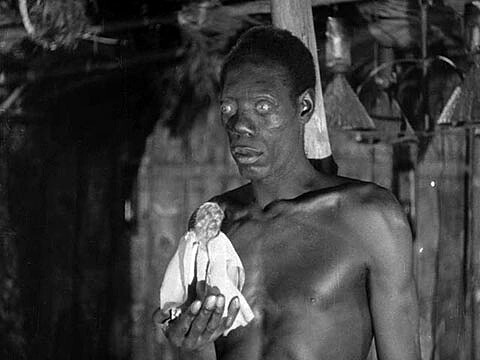

Franco “Bifo” Berardi describes how Italian Workerist thought of the 1960s overturned the dominant vision of Marxism. The working class was no longer conceived as “a passive object of alienation, but instead the active subject of a refusal capable of building a community starting out from its estrangement from the interests of capitalistic society.”19 For the estranged worker, alienation became productive. Deleuze and Guattari were part of the same generation of thinkers and overturned a traditional view of alienation, for example by considering schizophrenia as a multiple and nomadic form of consciousness (and not as a passive clinical effect or loss of self). They put it radically: “The only modern myth is the myth of zombies—mortified schizos, good for work, brought back to reason.”20
The origin of the zombie in Haitian vodoun has an explicit relationship to labor, as a repetition or reenactment of slavery. The person who receives the zombie spell “dies,” is buried, excavated, and put to work, usually as a field hand. In his book The Serpent and the Rainbow, ethnobotanist Wade Davis tells the story of a man called Narcisse, a former zombie:
[Narcisse] remembered being aware of his predicament, of missing his family and friends and his land, of wanting to return. But his life had the quality of a strange dream, with events, objects, and perceptions interacting in slow motion, and with everything completely out of his control. In fact there was no control at all. Decision had no meaning, and conscious action was an impossibility.21
The zombie can move around and carry out tasks, but does not speak, cannot fend for himself, cannot formulate thoughts, and doesn’t even know its own name: its fate is enslavement. “Given the colonial history”—including occupation by France and the US—Davis continues:
the concept of enslavement implies that the peasant fears and the zombie suffers a fate that is literally worse than death—the loss of physical liberty that is slavery, and the sacrifice of personal autonomy implied by the loss of identity.22
That is, more than inexplicable physiological change, victims of voodoo suffer a social and mental death, in a process initiated by fear. The zombie considered as a subaltern born of colonial encounters is a figure that has arisen then out of a new relationship to death: not the fear of the zombie apocalypse, as in the movies, but the fear of becoming one—the fear of losing control, of becoming a slave.
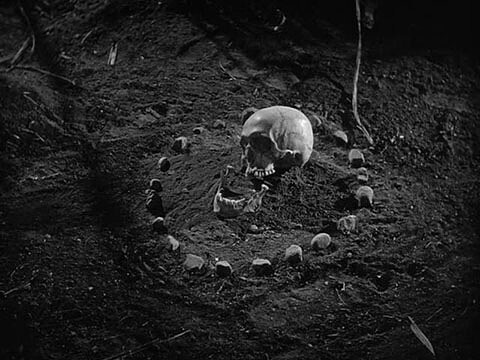

In pop culture the zombie is a twentieth-century monster and hence related to mass phenomena: mass production, mass consumption, mass death. It is not an aristocrat like Dracula or a star freak like Frankenstein; it is the everyman monster in which business as usual coexists with extremes of hysteria (much like democracy at present, in fact). The zombie also straddles the divide between industrial and immaterial labor, from mass to multitude, from the brawn of industrialism to the dispersed brains of cognitive capitalism.
With its highly ambiguous relationship to subjectivity, consciousness, and life itself, we may hence consider the zombie a paradigm of immaterial labor.23 Both the zombie and immaterial labor celebrate logistics and a colonization of the brain and the nervous system. The living dead roam the world and have a genetic relationship with restlessness: they are “pure motoric instinct,” as it is expressed in Romero’s Dawn of the Dead; or they represent a danger “as long as they got a working thinker and some mobility,” as one zombie hunter puts it in the novel World War Z by Max Brooks.24 The latter, counterintuitive reference to the zombie’s intellectual capacity may be brought to bear on the terms “intellectual labor” and “cognitive capitalism,” used to denote brain-dead—and highly regulated—industries such as advertising and mass media. Or, the “working thinker” in the zombie’s dead flesh is an indication of the Marxist truth that matter thinks. As Lenin asked: What does the car know—of its own relations of production? In the same way, the zombie may prompt the question: What does the zombie’s rotting flesh know—of the soul? As Spinoza said: what the body can do, that is its soul.25 And the zombie can do quite a lot.
In Philip Kaufman’s 1978 film Invasion of the Body Snatchers, a space plant that duplicates people and brings them back as empty versions of themselves spreads its fibers across the Earth as if it were the World Wide Web. The body-snatched don’t just mindlessly roam the cities in search of flesh and brains, but have occupied the networks of communication and start a planetary operation to circulate bodies, as if proponents of the great transformation from industrialism to immaterial labor, in which production is eclipsed and taken over by a regime of mediation and reproduction. This is our logistical universe, in which things on the move are valorized, and in which more than ever before the exchange of information itself determines communicative form. The nature of what is exchanged recedes in favor of the significance of distribution and dissemination. Exigencies of social adaptation, by now familiar to us, also appear in Invasion. Somebody who has clearly been body-snatched thus tells the main character, played by Donald Sutherland, to not be afraid of “new concepts”: imperatives to socialize and to reinvent oneself, shot through with all the accompanying tropes of self-cannibalization (self-management, self-valuation, self-regulation, self-consume, and so forth). Thus the body snatchers are a caricature of ideal being, incarnating mobility without nervousness.26
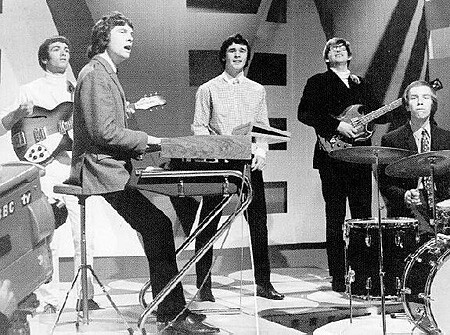

3. “Solipsistic and asocial horror”
The necessity of a sociological reading of the modern monster derives, for our purpose, from the pressure that the capitalization of creativity has in the past decade exerted on artistic practice and thinking. Art has become a norm, in a different way than it was under the cultural order of the bourgeoisie. In short, within the “experience economy,” art’s normative power consists in commodifying a conventional idea of art’s mythical otherness with a view to the reproduction of subjectivity and economy.
Ten years ago, management thinkers James H. Gilmore and B. Joseph Pine II launched the concept of the experience economy with their book The Experience Economy: Work is Theatre and Every Business a Stage. Here they describe an economy in which experience is a new source of profit to be obtained through the staging of the memorable. What is being produced is the experience of the audience, and the experience is generated by means of what may be termed “authenticity effects.” In the experience economy it is often art and its markers of authenticity—creativity, innovation, provocation, and the like—that ensure economic status to experience.27
Gilmore and Pine advise manufacturers to tailor their products to maximize customer experience, thus valve manufacturers could profitably increase the “pumping experience”; furniture manufacturers might correspondingly emphasize the “sitting experience”; and home-appliance manufacturers could capitalize on the “washing experience,” the “drying experience,” and the “cooking experience.”28 The “psychological premise” of being able to “alter consumers’ sense of reality” is a central theme.29 Gilmore and Pine’s mission is to highlight the profitability of producing simulated situations. Their arguments will not be subverted by simply pointing out this fact: the experience economy is beyond all ideology inasmuch as it is their declared intention to fake it better and more convincingly. In the experience economy’s ontological displacement towards an instrumentalized phenomenology, it becomes irrelevant to verify the materiality of the experienced object or situation. Memorable authenticity effects are constituted in a register of subjective experience. In other words, one’s own subjectivity becomes a product one consumes, by being provided with opportunities to consume one’s own time and attention through emotive and cognitive responses to objects and situations. Similarly, when the experience economy is applied to cultural institutions and the presentation of art works, it revolves around ways of providing the public with the opportunity to reproduce itself as consumers of cultural experiences.
It is difficult not to see the consequences of the experience economy as the dismantling of not only artistic and institutional signification but also of social connections. Thus the syllabus for the masters-level experience economy course offered by the University of Aarhus explains how consumers within an experience economy function as “hyper-consumers free of earlier social ties, always hunting for emotional intensity,” and that students of the course are provided with “the opportunity to adopt enterprising behaviours.”30
Cultural critic Diedrich Diederichsen calls such self-consume Eigenblutdoping, blood doping. Just as cyclists dope themselves using their own blood, cultural consumers seek to augment their self-identity by consuming the products of their own subjectivity. According to Diederichsen, this phenomenon is a “solipsistic and asocial horror,” which reduces life to a loop we can move in and out of without actually participating in any processes.31 Inside these loops, time has been brought to a halt, and the traditional power of the cultural institution is displaced when audiences are invited to play and participate in an ostensible “democratization” of art. In the loop, audiences ironically lose the possibility of inscribing their subjectivities on anything besides themselves, and are hence potentially robbed of an important opportunity to respond to the institution and the exhibitionary complex where art is presented.
The zombie returns at this point, then, to stalk a new cultural economy that is necessarily already no longer current; nor is it ever outdated, because it cancels cultural time measured in decades and centuries. The time of the experience economy is that of an impoverished present.32


4. The Death of Death
There are several reasons why we need a modern monster. Firstly, it can help us meditate on alienation in our era of an immaterial capitalism that has turned life into cash; into an onto-capitalist, forensic culture in which we turn towards the dead body, not with fear, but as a kind of pornographic curator (as testified to by any number of TV series about vampires, undertakers, and forensics). As Steven Shaviro writes, “zombies mark the rebellion of death against its capitalist appropriation … our society endeavors to transform death into value, but the zombies enact a radical refusal and destruction of value.”33 Shaviro sharply outlines here the zombie’s exit strategy from that strangest of scenarios, the estrangement of death itself. But at the same time, one wonders whether it can be that simple. Immaterial capitalism’s tropes of self-cannibalization render it more ambiguous than ever whether the abject is a crisis in the order of subject and society, or a perverse confirmation of them. In other words, beyond the destruction of value that Shaviro discusses, it all revolves around a riddle: If, during our lifespan as paying beings, life itself has become capital, then where does that leave death?
One answer is that, in a world with no outsides, death died. We are now witnessing the death of death, of which its overrepresentation is the most prominent symptom. For the first time since the end of the Second World War there are no endgame narratives. Apocalyptic horizons are given amnesty. A planet jolted out of its ecological balance is a disaster, but not something important. In art, the mid twentieth century’s “death of the Author” and “death of Man” are now highly operational, and the “death of Art,” a big deal in the 1980s, is now eclipsed by the splendid victory of “contemporary art.” This in spite of the obvious truth that art, considered as an autonomous entity, is dead and gone, replaced by a new art (a double?) that is directly inscribed on culture; a script for social and cultural agency. There is nothing left to die, as if we were caught in the ever-circling eye of the eternal return itself. As the blurb for George Romero’s Survival of the Dead (2009) goes: “Death isn’t what it used to be.” This ought to be a cause for worry. Endgame narratives have always accompanied new paradigms, or have negated or problematized the reproduction of received ideas.
The zombie is always considered a post-being, a no-longer-human, an impossible subject. But can we also think of it as a pre-being? Can we turn it into a child; that most poignant embodiment of the monster and the ghost (the “child-player against whom can do nothing,” as Spinoza put it), or at least allow it to indicate a limit of not-yet-being?34 That is, the lack incarnated by zombie is also present at the level of enunciation in the zombie narrative. In Romero’s films, the zombie apocalypse gradually recedes into the background and other—inter-human, social—problems become prominent during the unfolding of the plot. The zombie, always mute, is never at the center of the plot the way Dracula or Frankenstein are, hence its presence cannot be explained away as a mechanism for reintegrating social tension through fear. It is a strange, tragicomic monster that displaces evil and its concept: the zombie isn’t evil, nor has it been begot by evil; it is a monstrosity that deflects itself in order to show that our imagination cannot stop at the monster. It is irrelevant if you kill it (there will always be ten more rotten arms reaching through the broken window pane). The zombie pushes a horizon of empty time ahead of it; whether that time will be messianic or apocalyptic is held in abeyance. Or, the zombie represents the degree to which we are incapable of reimagining the future. So the question becomes: How can we look over its shoulder? What future race comes after the zombie? How do we cannibalize self-cannibalization? The only way to find out is to abstract the zombie condition.
Sooner or later, the opacity of our fascination with the zombie exhausts sociological attempts at reading of it. There is ultimately no way to rationalize the skepticism the zombie drags in. A similar mechanism is at work in art. Whereas sociology is based on positive knowledge, art is based on the concept of art and on culture’s re-imagining of that concept. Beyond the experience economy, and beyond sociological analysis of these, there lie new artistic thinking and imagining. Thus we can witness how it all falls apart in the end: sociology, zombie as allegory, even the absence of the end that turns out to be one. What is left are material traces to be picked up anew.
I am grateful to Brian Kuan Wood for the title of this essay.
“The Playboy Interview: Marshall McLuhan,” Playboy, March 1969, available at →. I am grateful to Jacob Lillemose for this reference.
Sigmund Freud, The Uncanny, trans. David McLintock (1899; London: Penguin Books, 2003), 150.
Karl Marx and Friedrich Engels, The Communist Manifesto, trans. Samuel Moore (1848; London: Penguin Classics, 1967), 78, 94.
Ibid.
Ibid., 83.
Jacques Derrida, Specters of Marx: the State of the Debt, the Work of Mourning, and the New International, trans. Peggy Kamuf (1993; New York: Routledge, 2006), 57.
I am thinking of Mike Kelley’s The Uncanny (1993; Cologne: Walther König 2004), Christoph Grunenberg’s Gothic: Transmutations of Horror in Late-Twentieth-Century Art (Boston: Institute of Contemporary Art, 1997), and Paul Schimmel’s Helter Skelter: L.A. Art in the 1990s, ed. Catherine Gudis (Los Angeles: Museum of Contemporary Art, 1992), which had the subtitle Art of the Living Dead).
David Deitcher: “Social Aesthetics,” in Democracy: A Project by Group Material, ed. Brian Wallis (New York: DIA Art Foundation, 1990), 37. (Deitcher erroneously states that Dawn of the Dead appeared in 1979; the correct year is 1978. I have corrected this in the quotation.)
Franco Moretti, “Dialectic of Fear,” in Signs Taken for Wonders: On the Sociology of Literary Forms, trans. Susan Fischer, David Forgacs, and David Miller (London: Verso, 1983), 84.
Steven Shaviro, The Cinematic Body (1993; Minneapolis: University of Minnesota Press, 2006), 91.
Holmes, “The Affectivist Manifesto: Artistic Critique in the 21st Century,” in Escape the Overcode: Activist Art in the Control Society (Eindhoven: Van Abbemuseum; Zagreb: What, How & for Whom, 2009), 14.
See Julia Kristeva, Powers of Horror: An Essay on Abjection, trans. Leon S. Roudiez (New York: Columbia University Press, 1982).
Hal Foster, The Return of the Real (Cambridge, MA: The MIT Press, 1996), 156.
Jean and John L. Comaroff, “Alien-Nation: Zombies, Immigrants and Millennial Capitalism,” South Atlantic Quarterly 101, no. 4 (Fall 2002): 779–805. I am grateful to Kodwo Eshun for this reference. The allegorical impulse behind bringing the zombie back to the Marxian concept of alienation derives from the dynamics of the zombie’s ruinous (lack of) existence. Thus George Romero’s famous trilogy is a sequence of allegorical variation: a critique of racist America (Night), a critique of consumerism (Dawn), and a critique with feminist overtones (Day).
See Gilles Deleuze and Félix Guattari: Anti-Oedipus: Capitalism and Schizophrenia, trans. Robert Hurley, Mark Seem, and Helen R. Lane (1972; Minneapolis: University of Minnesota Press, 1983).
See also my introduction in the exhibition guide A History of Irritated Material (London: Raven Row, 2010).
Karl Marx, “Estranged Labour,” in Economic and Philosophical Manuscripts of 1844, available at →.
Franco “Bifo” Berardi, The Soul at Work: From Alienation to Autonomy, trans. Francesca Cadel and Mecchia Giuseppina (New York: Semiotext(e), 2009), 23.
Deleuze and Guattari: Anti-Oedipus: Capitalism and Schizophrenia, 335.
Wade Davis, The Serpent and the Rainbow (New York: Simon & Schuster, 1985), 80.
Ibid., 139.
See also my article “Brains” in Muhtelif no. 4 (2008).
Max Brooks, World War Z: An Oral History of the Zombie War (New York: Gerald and Duckworth, 2007), 96.
See Berardi, The Soul at Work, 21.
In the Spanish translation the body snatchers are ultracuerpos: ultrabodies, as if particularly well-adapted mutations.
See also my Kunst er Norm (Aarhus: Jutland Art Academy, 2008).
James H. Gilmore and B. Joseph Pine II, The Experience Economy: Work is Theatre and Every Business a Stage (Boston: Harvard Business School Press, 1999), 16.
Ibid., 175.
See the Aarhus University, Faculty of Humanities website.
Diedrich Diederichsen, Eigenblutdoping: Selbstverwertung, Künstlerromantik, Partizipation (Cologne: Kiepenheuer & Witsch, 2008).
Žižek discusses the zombie in terms of suffering. Of Romero’s Night of the Living Dead, he writes: “The ‘undead’ are not portrayed as embodiments of pure evil, of a simple drive to kill or revenge, but as sufferers, pursuing their victims with an awkward persistence, colored by a kind of infinite sadness.” The dead make their melancholic return because they haven’t been properly buried—just like ghosts, zombies return “as collectors of some unpaid symbolic debt.” Žižek points out that “the return of the dead signifies that they cannot find their proper place in the text of tradition,” an insight that we can use for our own sociological ends. Similarly, the experience commodity cannot find its place in the text of tradition and culture, inasmuch as this is what the experience economy is undoing. Slavoj Žižek, Looking Awry: An Introduction to Jacques Lacan through Popular Culture (Cambridge, MA: The MIT Press, 1992), 22–23.
Shaviro, The Cinematic Body, 84.
Quoted from Gilles Deleuze and Félix Guattari, Qu’est-ce que la philosophie (Paris: Éditions de Minuit, 1991), 70.
Category
Subject
Zombies of Immaterial Labor was originally presented in the Masquerade lecture series, organized by the curatorial platform If I Can’t Dance I Don’t Want To Be Part Of Your Revolution, at the Piet Zwart Institute in Rotterdam, January 25, 2010.



